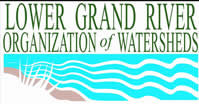Lower Grand Watershed Interactive Tool (WIT) - Pesticides

Pesticides are chemical substances used to kill pests such as weeds, insects, algae, rodents, and other undesirable agents.
History of Pesticides
- Sulfur was used as an insecticide well before 500 B.C.
- Toxic compounds of arsenic, lead, and mercury were being applied to crops by the 1400s.
- Human poisonings and fatalities caused farmers to quit using these methods by the 1920s.
- In 1939, DDT (dichloro-diphenyl-trichloroethane) was identified as a pesticide and went on to become the most-used.
- Hundreds of synthetic organic chemicals were developed to be used as pesticides since 1945.
- In 1972, DDT was banned for use in the United States.
Current Statistics on Pesticides
- Cotton (55%) and corn (35%) use about 90% of the insecticides and 80% of the herbicides in the United States in 1995.
- "According to the Environmental Protection Agency, the average lawn in the United States is doused with more than 10 times more synthetic pesticides per hectare than U.S. cropland."
- "Each year, more than 250,000 U.S. residents become ill because of household use of pesticides, and such pesticides are a major source of accidental poisonings and deaths for children under age 5."
- According to the U.S. Department of Agriculture, no more than 2% (and often less than 0.1%) of the insecticides applied to crops by aerial spraying or by ground spraying actually reaches the target pests; less than 5% of herbicides applied to crops reaches the target weeds.
Types of Pesticides
- Broad-spectrum pesticides are harmful to many types of organisms
- Selective-spectrum pesticides are harmful to specific group of organisms.
How are Pesticides Nonpoint Source Pollutants?
Pesticides very rarely stay where they are meant to be. Pesticides can get into water by misapplication, by being picked up by runoff, or by being brought in by wind going over other countries where there aren't as many restrictions. When it enters the water body it can harm aquatic wildlife and plants. By entering into food webs pesticides can increase their potency (smaller animals getting eaten by larger animals, concentration of toxins increases as pesticides moves up food chain).
Source: Miller, G. Tyler Jr., Living in the Environment 11th edition. Brooks/Cole Publishing Company. 2000. pg 562.
